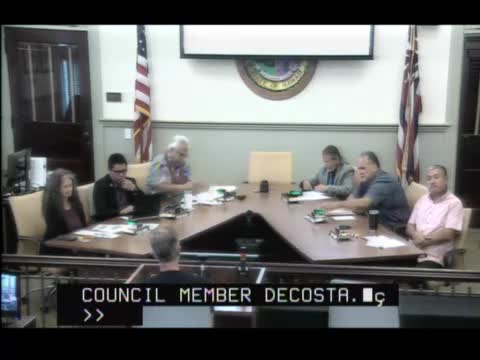Firefighters Battle Intense Blaze in Challenging Terrain
June 05, 2024 | Kauai County, Hawaii

This article was created by AI summarizing key points discussed. AI makes mistakes, so for full details and context, please refer to the video of the full meeting. Please report any errors so we can fix them. Report an error »

In a recent government meeting, officials discussed the challenges faced during a significant fire incident in the Mokwa area, highlighting the impact of prolonged drought conditions on local ecosystems. The conversation began with a recollection of a previous fire prevention event involving various stakeholders, including Sherry Mann and her team from Illinois.
The speaker detailed the fire's severity, noting that the region had experienced drought conditions leading up to November, which severely affected the native forests dominated by Koa, Ohia, and Santa Wood. The understory, typically moist Aluhe, had dried out significantly due to the lack of rainfall, creating a hazardous environment where the duff layer of dead material became highly flammable. This transformation allowed the fire to spread rapidly, akin to a grass fire, consuming the forest floor down to the dirt.
The terrain's difficulty compounded the firefighting efforts, necessitating an aerial response. Initially, the Honolulu Fire Department led the response, but as the fire advanced into Fish and Wildlife Services lands, command shifted to their team. They coordinated with air resources from Honolulu and enlisted support from the National Guard, utilizing helicopters for firefighting operations.
The discussion also drew parallels between the dry shrub conditions in Mokwa and the flammability of guinea grass during summer months, emphasizing the ongoing threat posed by underbrush in the region. The speaker noted that while it takes longer for certain vegetation to dry out, once it does, it becomes extremely combustible, underscoring the need for continued vigilance and proactive fire management strategies in the area.
The speaker detailed the fire's severity, noting that the region had experienced drought conditions leading up to November, which severely affected the native forests dominated by Koa, Ohia, and Santa Wood. The understory, typically moist Aluhe, had dried out significantly due to the lack of rainfall, creating a hazardous environment where the duff layer of dead material became highly flammable. This transformation allowed the fire to spread rapidly, akin to a grass fire, consuming the forest floor down to the dirt.
The terrain's difficulty compounded the firefighting efforts, necessitating an aerial response. Initially, the Honolulu Fire Department led the response, but as the fire advanced into Fish and Wildlife Services lands, command shifted to their team. They coordinated with air resources from Honolulu and enlisted support from the National Guard, utilizing helicopters for firefighting operations.
The discussion also drew parallels between the dry shrub conditions in Mokwa and the flammability of guinea grass during summer months, emphasizing the ongoing threat posed by underbrush in the region. The speaker noted that while it takes longer for certain vegetation to dry out, once it does, it becomes extremely combustible, underscoring the need for continued vigilance and proactive fire management strategies in the area.
View full meeting
This article is based on a recent meeting—watch the full video and explore the complete transcript for deeper insights into the discussion.
View full meeting
